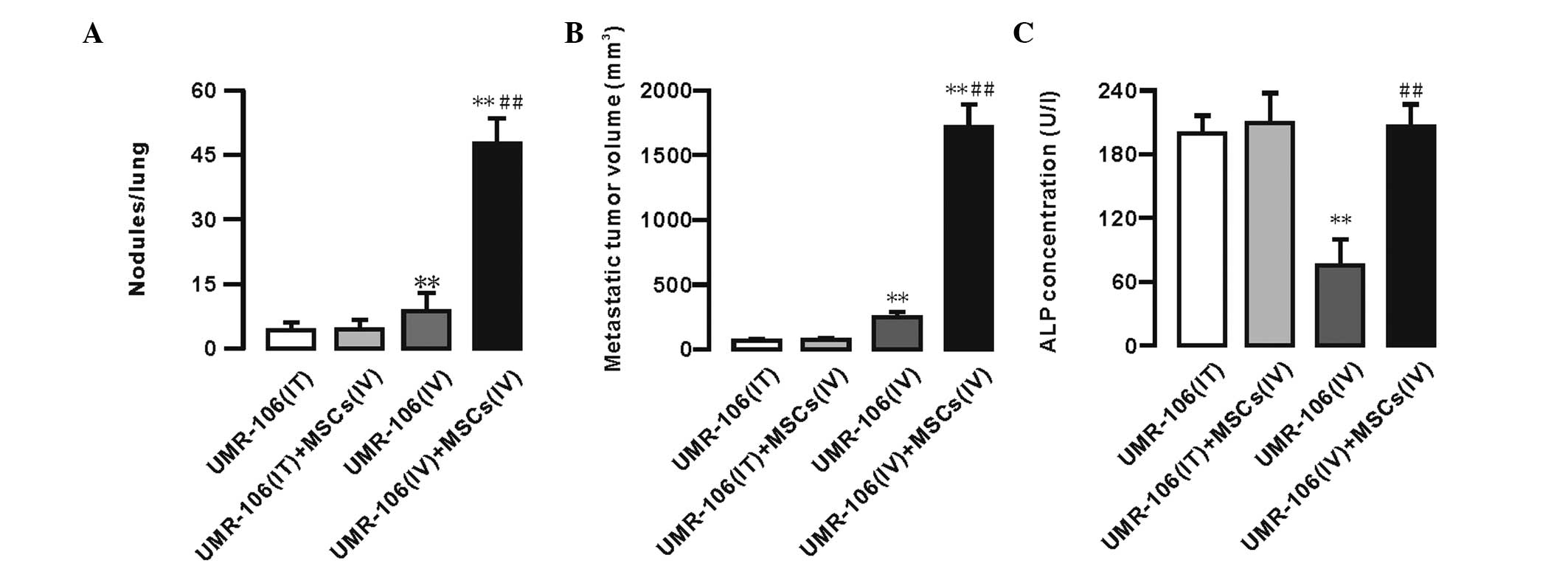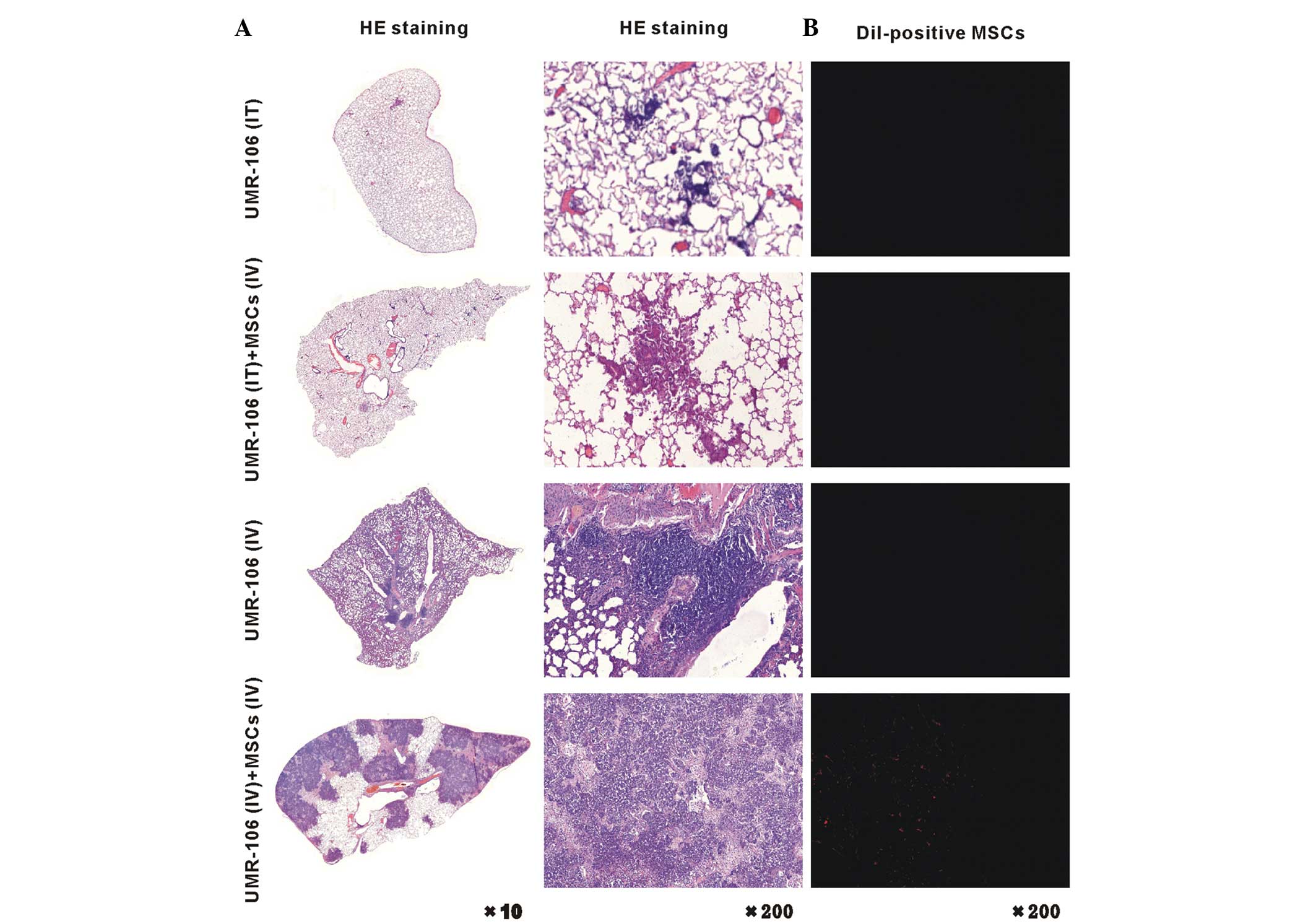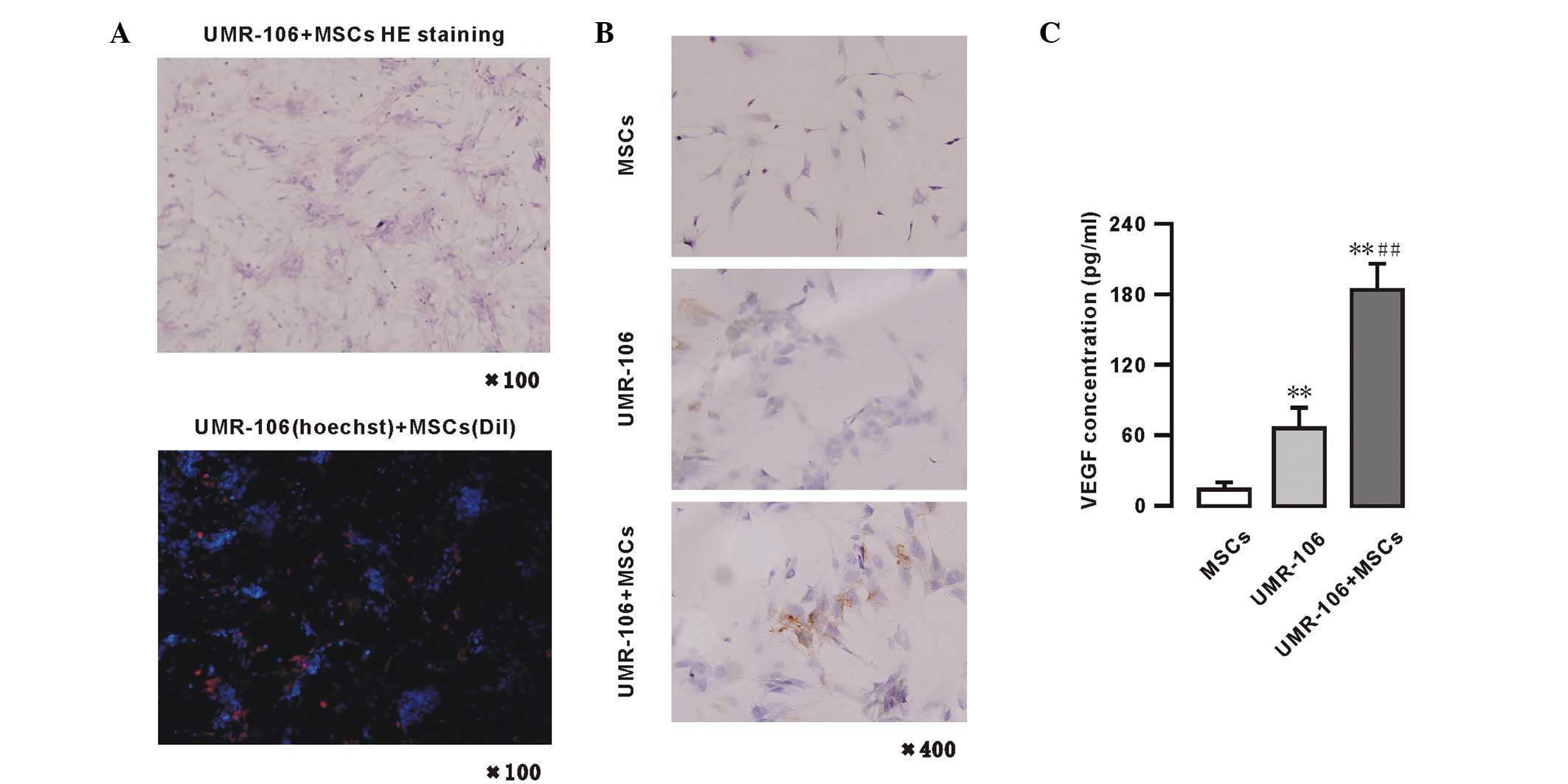|
1
|
Sleeman J and Steeg PS: Cancer metastasis
as a therapeutic target. Eur J Cancer. 46:1177–1180. 2010.
|
|
2
|
Meyers PA and Gorlick R: Osteosarcoma.
Pediatr Clin North Am. 44:973–989. 1997.
|
|
3
|
Aung L, Gorlick R, Healey JH, et al:
Metachronous skeletal osteosarcoma in patients treated with
adjuvant and neoadjuvant chemotherapy for nonmetastatic
osteosarcoma. J Clin Oncol. 21:342–348. 2003.
|
|
4
|
Chen X, Yang TT, Wang W, et al:
Establishment and characterization of human osteosarcoma cell lines
with different pulmonary metastatic potentials. Cytotechnology.
61:37–44. 2009.
|
|
5
|
Karnoub AE, Dash AB, Vo AP, et al:
Mesenchymal stem cells within tumour stroma promote breast cancer
metastasis. Nature. 449:557–563. 2007.
|
|
6
|
Aboody KS, Brown A, Rainov NG, et al:
Neural stem cells display extensive tropism for pathology in adult
brain: evidence from intracranial gliomas. Proc Natl Acad Sci USA.
97:12846–12851. 2000.
|
|
7
|
De Palma M, Venneri MA, Roca C and Naldini
L: Targeting exogenous genes to tumor angiogenesis by
transplantation of genetically modified hematopoietic stem cells.
Nat Med. 9:789–795. 2003.
|
|
8
|
Klopp AH, Gupta A, Spaeth E, Andreeff M
and Marini FR III: Concise review: Dissecting a discrepancy in the
literature: do mesenchymal stem cells support or suppress tumor
growth? Stem Cells. 29:11–19. 2011.
|
|
9
|
Tsukamoto S, Honoki K, Fujii H, et al:
Mesenchymal stem cells promote tumor engraftment and metastatic
colonization in rat osteosarcoma model. Int J Oncol. 40:163–169.
2012.
|
|
10
|
Schall TJ, Jongstra J, Dyer BJ, et al: A
human T cell-specific molecule is a member of a new gene family. J
Immunol. 141:1018–1025. 1988.
|
|
11
|
Forrest SM, Ng KW, Findlay DM, et al:
Characterization of an osteoblast-like clonal cell line which
responds to both parathyroid hormone and calcitonin. Calcif Tissue
Int. 37:51–56. 1985.
|
|
12
|
Yu Z, Sun H, Fan Q, Long H, Yang T and Ma
B: Establishment of reproducible osteosarcoma rat model using
orthotopic implantation technique. Oncol Rep. 21:1175–1180.
2009.
|
|
13
|
Tu XH, Song JX, Xue XJ, et al: Role of
bone marrow-derived mesenchymal stem cells in a rat model of severe
acute pancreatitis. World J Gastroenterol. 18:2270–2279. 2012.
|
|
14
|
Wang H and Chen L: Tumor microenviroment
and hepatocellular carcinoma metastasis. J Gastroenterol Hepatol.
28(Suppl 1): S43–S48. 2013.
|
|
15
|
Xu WT, Bian ZY, Fan QM, Li G and Tang TT:
Human mesenchymal stem cells (hMSCs) target osteosarcoma and
promote its growth and pulmonary metastasis. Cancer Lett.
281:32–41. 2009.
|
|
16
|
Hiratsuka S, Nakamura K, Iwai S, et al:
MMP9 induction by vascular endothelial growth factor receptor-1 is
involved in lung-specific metastasis. Cancer Cell. 2:289–300.
2002.
|
|
17
|
Hiratsuka S, Watanabe A, Aburatani H and
Maru Y: Tumour-mediated upregulation of chemoattractants and
recruitment of myeloid cells predetermines lung metastasis. Nat
Cell Biol. 8:1369–1375. 2006.
|
|
18
|
Kaplan RN, Riba RD, Zacharoulis S, et al:
VEGFR1-positive haematopoietic bone marrow progenitors initiate the
pre-metastatic niche. Nature. 438:820–827. 2005.
|
|
19
|
Chambers AF, Groom AC and MacDonald IC:
Dissemination and growth of cancer cells in metastatic sites. Nat
Rev Cancer. 2:563–572. 2002.
|
|
20
|
Fidler IJ and Nicolson GL: Fate of
recirculating B16 melanoma metastatic variant cells in parabiotic
syngeneic recipients. J Natl Cancer Inst. 58:1867–1872. 1977.
|
|
21
|
Kaplan RN, Psaila B and Lyden D: Bone
marrow cells in the ‘pre-metastatic niche’: within bone and beyond.
Cancer Metastasis Rev. 25:521–529. 2006.
|
|
22
|
Zumsteg A and Christofori G: Corrupt
policemen: inflammatory cells promote tumor angiogenesis. Curr Opin
Oncol. 21:60–70. 2009.
|
|
23
|
Worth LL, Lafleur EA, Jia SF and
Kleinerman ES: Fas expression inversely correlates with metastatic
potential in osteosarcoma cells. Oncol Rep. 9:823–827. 2002.
|
|
24
|
Plate K: From angiogenesis to
lymphangiogenesis. Nat Med. 7:151–152. 2001.
|
|
25
|
Oda Y, Yamamoto H, Tamiya S, Matsuda S,
Tanaka K, Yokoyama R, Iwamoto Y and Tsuneyoshi M: CXCR4 and VEGF
expression in the primary site and the metastatic site of human
osteosarcoma: analysis within a group of patients, all of whom
developed lung metastasis. Mod Pathol. 19:738–745. 2006.
|
|
26
|
Zhang P, Dong L, Yan K, et al:
CXCR4-mediated osteosarcoma growth and pulmonary metastasis is
promoted by mesenchymal stem cells through VEGF. Oncol Rep.
30:1753–1761. 2013.
|
|
27
|
Furudoi A, Tanaka S, Haruma K, et al:
Clinical significance of vascular endothelial growth factor C
expression and angiogenesis at the deepest invasive site of
advanced colorectal carcinoma. Oncology. 62:157–166. 2002.
|
|
28
|
Kitadai Y, Amioka T, Haruma K, et al:
Clinicopathological significance of vascular endothelial growth
factor (VEGF)-C in human esophageal squamous cell carcinomas. Int J
Cancer. 93:662–666. 2001.
|
|
29
|
Tian X, Song S, Wu J, Meng L, Dong Z and
Shou C: Vascular endothelial growth factor: acting as an autocrine
growth factor for human gastric adenocarcinoma cell MGC803. Biochem
Biophys Res Commun. 286:505–512. 2001.
|
|
30
|
McAllister SS, Gifford AM, Greiner AL, et
al: Systemic endocrine instigation of indolent tumor growth
requires osteopontin. Cell. 133:994–1005. 2008.
|
|
31
|
Shojaei F, Wu X, Qu X, et al:
G-CSF-initiated myeloid cell mobilization and angiogenesis mediate
tumor refractoriness to anti-VEGF therapy in mouse models. Proc
Natl Acad Sci USA. 106:6742–6747. 2009.
|
|
32
|
PosthumaDeBoer J, Witlox MA, Kaspers GJ
and van Royen BJ: Molecular alterations as target for therapy in
metastatic osteosarcoma: a review of literature. Clin Exp
Metastasis. 28:493–503. 2011.
|

















